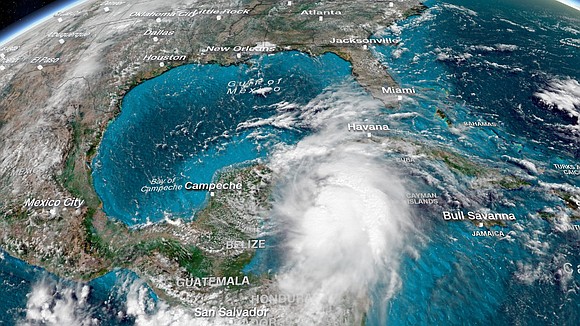Michael, now a Category 1 hurricane, expected to strengthen
Style Magazine Newswire | 10/8/2018, 12:33 p.m.
By Susannah Cullinane, Joe Sterling and Patrick Oppmann, CNN
(CNN) -- Michael, now a Category 1 hurricane slashing Cuba, is forecast to be a "dangerous major hurricane" when it smacks the US Gulf Coast on Wednesday, the National Hurricane Center said.
The forecast indicates Michael may be a Category 3 hurricane -- with winds from 111 to 129 mph -- when it strikes.
"Life-threatening storm surge is possible along portions of the Florida Gulf Coast regardless of the storm's exact track or intensity," the center said. "Well-built framed homes may incur major damage or removal of roof decking and gable ends. Many trees will be snapped or uprooted, blocking numerous roads. Electricity and water will be unavailable for several days to weeks after the storm passes."
Floridians scurried to prepare after Gov. Rick Scott declared a state of emergency for 26 counties.
"Heavy rainfall from Michael could produce life-threatening flash flooding from the Florida Panhandle and Big Bend region into portions of the Carolinas through Thursday," the hurricane center said.
The storm now has maximum sustained winds of 75 mph. A Category 1 hurricane has sustained winds of 74 to 95 mph.
As of 11 a.m. ET, Michael was centered about 140 miles east-northeast of Cozumel, Mexico, and 50 miles south of the western tip of Cuba. The storm's tropical storm-force winds extended 175 miles from its center.
Hurricane-force winds extend outward up to 30 miles from the center and tropical-storm-force winds extend outward up to 175 miles.
The storm is aiming at a region that stretches from Mobile, Alabama, through the Florida Panhandle and into the Big Bend area of northern Florida.
A hurricane watch has been declared for the Alabama-Florida border to the Suwannee River in Florida. Tropical storm and storm surge watches have been issued from the Mississippi-Alabama border to Tampa Bay.
'Everybody's got to get ready'
Scott warned that Michael could reach land as a Category 2 hurricane, with winds in excess of 100 mph.
"This storm will be life-threatening and extremely dangerous," Scott said at a press briefing.
"This storm has the potential to bring devastating impacts to communities across the Panhandle and Big Bend and every family must be prepared."
Scott activated 500 National Guard troops in advance of the storm.
"Everybody's got to get ready. Don't take a chance," he said. "We're going to get storm surge, we have wind, we have a chance of flooding, we have a significant chance of tornadoes."
The governor declared a state of emergency for Escambia, Santa Rosa, Okaloosa, Walton, Holmes, Washington, Bay, Jackson, Calhoun, Gulf, Gadsden, Liberty, Franklin, Leon, Wakulla, Jefferson, Madison, Taylor, Hamilton, Suwannee, Lafayette, Dixie, Columbia, Gilchrist, Levy and Citrus counties.
A mandatory evacuation order has been issued for coastal areas of Gulf County, according to a news release from the Port St. Joe Police Department.
Florida State University campuses in Tallahassee and Panama City plan to close Tuesday through Friday.
In western Cuba, hurricane conditions expected
In the Caribbean, a hurricane warning is in effect for the Cuban province of Pinar del Rio. Tropical storm warnings are posted for the Isle of Youth in Cuba and the coast of Mexico from Tulum to Cabo Catoche, including Cozumel.
"Hurricane conditions will spread over portions of western Cuba this afternoon, where a hurricane warning is now in effect. Tropical storm conditions are expected over the northeastern Yucatan Peninsula and the Isle of Youth today," the center said.
"Michael is expected to produce heavy rainfall and flash flooding over portions of western Cuba and the northeastern Yucatan Peninsula of Mexico during the next couple of days."
The storm was expected to brush the westernmost province of Pinar Del Rio, where most of Cuba's famed cigar tobacco is grown, before continuing north to the United States.
According to an alert published by the Cuban Civil Defense, meteorologists warned affected residents that they could experience hurricane-force winds. Officials also alerted residents living on the coast of the possibility of flooding caused by the storm.




